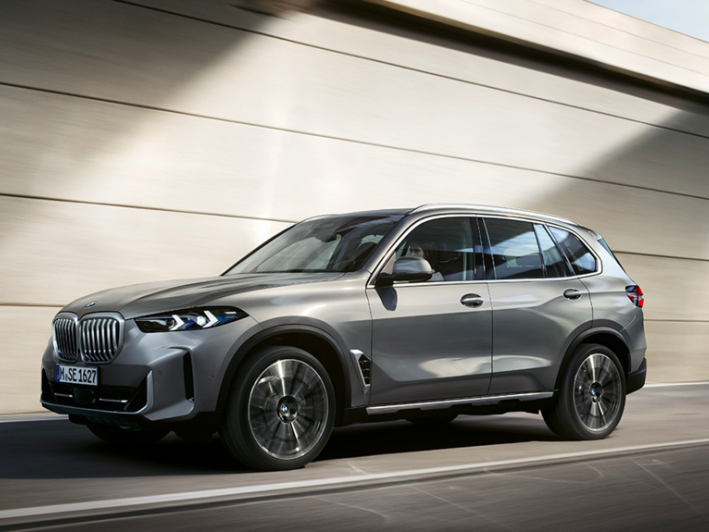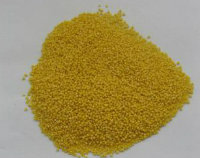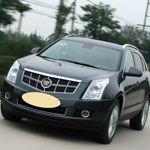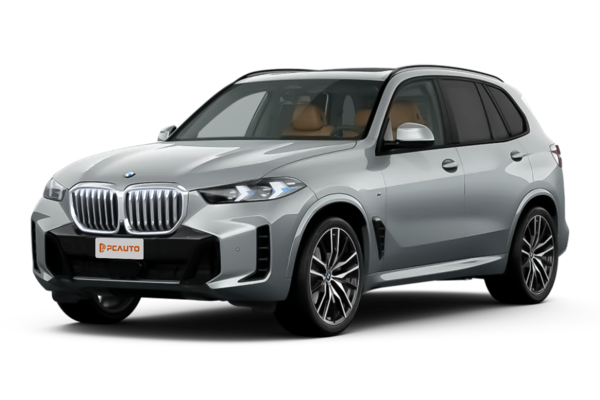Q
When is the Launch Date of BMW X5?
As a highly - anticipated mid - to large - sized luxury SUV, the latest generation (G05) of the BMW X5 made its global debut in 2018. For the Malaysian market, the locally assembled (CKD) version of the BMW X5 was officially launched in 2020. The specific launch time may be adjusted due to model year updates or special versions (such as the plug - in hybrid X5 xDrive45e). It is recommended to follow BMW Malaysia's official social media or website for the latest information.
For Malaysian consumers, the X5 not only offers the classic 3.0 - liter inline - six turbocharged engine (in the xDrive40i model) but also introduces a more environmentally friendly PHEV version. With local tax incentives (such as the EEV policy), its price becomes more competitive.
It's worth noting that the X5 in the Malaysian market is usually equipped with features more suitable for the tropical climate, like an enhanced air - conditioning system and UV - resistant glass. Meanwhile, it retains the original ConnectedDrive intelligent connectivity technology and off - road packages (such as adaptive air suspension). These details all reflect BMW's attention to the needs of Southeast Asian users.
If you're considering buying an X5, it's advisable to take a test drive at an authorized dealer and compare the configuration differences between models of different years. For example, the 2023 model might have an upgraded iDrive 8.0 system and more refined cabin materials.
Special Disclaimer: This content is published by users and does not represent the views or position of PCauto.
Related Q&A
Q
Does the 2024 BMW X5 qualify for tax credits?
The 2024 BMW X5 doesn't currently qualify for tax incentives in Malaysia. Here's the deal: Malaysia's tax breaks are mainly aimed at locally-assembled (CKD) Energy Efficient Vehicles (EEVs) or electric vehicles. Since the X5 is a fully imported (CBU) model and runs on good old-fashioned petrol, it's generally left out of those schemes.
To encourage greener choices, the Malaysian government offers reductions on import duties and sales tax for cars with EEV certification or fully electric vehicles. You'll see some hybrids or EVs getting those tax perks, for example. If you're into more efficient options, BMW's plug-in hybrids like the X5 xDrive45e might be worth a look – they could score some tax relief under certain conditions.
Before you take the plunge, though, it's smart to check in with the Royal Malaysian Customs Department or your nearest BMW dealership for the latest info. Tax incentives can shift with the annual budget announcements, so you don't want to miss any updates. On top of that, Malaysia slaps pretty hefty tariffs on imported luxury cars, and that's another reason the X5 comes with a higher price tag here.
Q
How much does it cost to maintain a BMW in 2024?
The cost of maintaining a BMW in Malaysia for 2024 varies depending on the model, age of the car, and the specific services needed. Generally speaking, a routine service – which covers an oil change, oil filter replacement, and basic inspections – will set you back around 800 to 1,500 Malaysian Ringgit. For more extensive services, like changing brake pads or transmission fluid, you're looking at 2,000 to 4,000 Ringgit or even more, depending on the BMW model and the pricing at the authorized service center.
As a luxury brand, BMWs do come with relatively higher maintenance costs. Part of that is down to the use of high-performance components and precision engineering, but these also help ensure your car stays in top shape for the long haul. Another option for owners is BMW's official service packages. These usually let you save some money and make budgeting more straightforward.
It's worth remembering that regular maintenance isn't just about keeping your car running smoothly – it also helps preserve its resale value when the time comes to sell. So, it's a good idea to stick strictly to BMW's recommended service intervals and choose official or certified service centers to guarantee quality work. If you're watching your budget, certified third-party BMW workshops can be an alternative, but make sure they meet the required technical standards and have access to genuine parts.
Q
How much is insurance on a 2024 BMW X5?
In Malaysia, insurance costs for the 2024 BMW X5 can vary quite a bit, typically ranging from around RM8,000 to RM15,000 annually. The exact figure hinges on several factors: the specific model (like the xDrive40i or M50i), engine displacement, the owner's age and driving history, the type of coverage (comprehensive vs. third-party only), and the insurance company's discount structure – with No Claim Discounts (NCD) potentially slashing premiums by up to 55%.
Then there's the reality of insuring a luxury vehicle: repair costs and import duties on parts play a big role here. As a premium SUV, the X5's genuine parts and servicing tend to be pricier than your average car, which naturally bumps up the insurance tab.
My advice? Head to insurance company websites or chat with agents to get accurate quotes. It’s also smart to compare the extra perks different providers offer, like roadside assistance or specific policy clauses. Malaysia’s insurance market also throws in add-ons such as natural disaster coverage – definitely worth considering if you’re in an area prone to heavy monsoons.
Understanding all these variables will help you budget smarter for your X5 and make sure you’re getting the right level of protection.
Q
How much does it cost to own a 2024 BMW X5?
The cost of owning a 2024 BMW X5 in Malaysia really depends on the specific trim and how you spec it out. Brand-new, you're looking at starting prices around RM500,000, and if you go all-in on the top-of-the-line model, it can easily push past RM700,000. That bottom line includes the purchase price, insurance, road tax, registration fees, and then there's the day-to-day running costs to factor in too.
Insurance is one of those variables – it'll swing based on your age and driving history, but you're generally looking at somewhere between RM8,000 to RM15,000 annually. Road tax, on the other hand, is calculated by engine displacement; for the 3.0-liter models, that's roughly RM2,500 a year.
Now, when it comes to maintenance, BMWs aren't the cheapest to upkeep. Regular servicing every 10,000 km or 12 months (whichever comes first) will set you back around RM2,000 to RM4,000. And let's not forget fuel – the 3.0L variants return a combined fuel economy of about 10 to 12 liters per 100 km, though that'll vary depending on how heavy your right foot is.
For prospective buyers, beyond just the upfront budget, it's smart to look into BMW's warranty and after-sales package. Typically, they offer a 5-year, unlimited-mileage warranty as standard, which does help ease some long-term ownership worries. If you're financing, you'll need to tack on interest costs too. Car loan interest rates in Malaysia usually hover between 2.5% to 3.5%, so it's definitely worth shopping around and comparing deals from different banks before signing on the dotted line.
Q
Is the BMW X5 made in China?
The BMW X5 Long Wheelbase version (G18) currently on sale in the Chinese market is produced at the BMW Brilliance Shenyang plant. This is a localized model launched by BMW to cater to Chinese consumers' demand for luxury SUVs. The standard wheelbase X5 (G05), on the other hand, is mainly imported into China from BMW's Spartanburg plant in the United States or its Rayong plant in Thailand.
As for the Malaysian market, the BMW X5s currently available are primarily imported from the Rayong plant in Thailand. Thanks to the tariff preferential agreements among ASEAN countries, BMW X5s imported from Thailand are more price-competitive. Malaysian consumers can enjoy BMW X5 quality that's on par with global standards, and at the same time, the models produced at the Thai plant have undergone adaptive adjustments for the tropical climate in Southeast Asia, such as enhanced air conditioning systems and improved heat dissipation performance.
It's worth mentioning that BMW has factories in multiple regions worldwide. This global production layout allows it to better meet the needs of different markets while ensuring consistent product quality. For Malaysian consumers, no matter which factory the BMW X5 is produced in, it has passed BMW's strict global unified quality standards inspection and can be purchased with confidence.
Q
Where is the 2024 BMW X5 built?
The 2024 BMW X5 is primarily built at the Spartanburg plant in Germany, one of BMW Group's largest production facilities worldwide. This factory specializes in crafting the brand's X-series SUVs, churning out models like the X3, X4, X5, X6, and X7. It's renowned for its high level of automation and strict quality control measures, ensuring every vehicle rolling off the line meets global standards. For the Malaysian market, some X5 units might also be brought in via import, and local customers can check with authorized dealers to confirm the specific origin of their desired vehicle.
As a luxury midsize to large SUV, the BMW X5 has always been a hit, thanks to its impressive driving dynamics, plush interiors, and cutting-edge tech features. The 2024 iteration takes things up a notch, particularly with upgrades to its intelligent driver assistance systems and plug-in hybrid variant, making it a strong fit for Malaysian buyers seeking a premium SUV experience. Here in Malaysia, BMW backs its vehicles with a comprehensive dealer network that provides after-sales service and genuine factory warranties, ensuring owners enjoy a top-notch ownership journey.
Q
How comfortable are the 2024 X5 seats?
The seats in the 2024 BMW X5 are absolute standouts when it comes to comfort. They’re wrapped in high - quality leather and feature an ergonomic design that delivers exceptional support and a snug, reassuring feel—perfect for those long drives where you don’t want to feel exhausted by the end. The adjustability is top - notch too: multiple power - adjustable settings allow you to find your ideal position, and then there’s the heating, cooling, and even massage functions. Trust me, in Malaysia’s sweltering heat, that cooling feature isn’t just a luxury—it’s a game - changer for keeping you comfortable in the passenger seat. BMW hasn’t forgotten about rear passengers either. The back seats get some love with extra legroom and adjustable backrest angles, making those longer journeys much more comfortable for everyone on board. What I really appreciate about BMW’s approach to seats is its commitment to balancing comfort with safety and durability. They don’t simply use soft padding and consider it sufficient—these seats are built to last and keep you secure. For the Malaysian market, they’ve clearly paid attention to local preferences. The seat padding feels a bit plusher, and the materials seem chosen to handle our tropical climate better, which is a nice touch. If you’re someone who prioritizes seat comfort—whether you’re chauffeuring clients or just treating yourself— the 2024 X5’s seats are definitely worth experiencing firsthand. This one’s a strong contender if comfort is high on your checklist.
Q
What BMW to buy in 2024?
If you're looking to buy a BMW in Malaysia in 2024, the 3 Series and X3 are solid picks—both have strong local market performance and cater to different needs. The 3 Series is all about that sweet handling and premium cabin feel, perfect if you actually enjoy driving. The X3, on the other hand, nails it as a family hauler with its roomy interior and efficient powertrains. Got a bigger budget? Keep an eye on the all-new 5 Series or the iX electric SUV. The 5 Series steps up the comfort and tech game, while the iX showcases BMW's latest in electrification—seriously impressive range and performance there. Malaysia's hot weather and road conditions can be tough on cars, but BMW's cooling systems and adaptive suspensions handle it like a pro. Oh, and don't sleep on the tax incentives for hybrids and EVs here—snagging a plug-in hybrid like the 330e or X5 xDrive45e could save you some cash on taxes. No matter which BMW you lean towards, hit up an authorized dealer for a test drive, check out the latest promotions, and factor in long-term maintenance costs and warranty coverage to make sure you're getting the best ownership experience possible.
Q
What are the pros and cons of the 2024 X5?
The 2024 BMW X5 is making waves in the Malaysian market, and it's easy to see why. Under the hood, you've got some serious muscle to choose from – the smooth 3.0L inline-six and the beastly 4.4L V8, both paired with that handy 48V mild-hybrid setup. That means you don't have to choose between performance and fuel efficiency; you get a bit of both. Step inside, and it's all premium materials, plus the latest iDrive 8.5 system that keeps things feeling super tech-forward. Space-wise, it's got plenty, making it a solid pick for families too. And let's not forget the upgraded driving assistance systems – they're smarter than ever, which definitely adds to that peace of mind behind the wheel.
Of course, it's not all sunshine and rainbows. The X5 does come with a pretty steep price tag, and let's be real, maintenance and repairs won't be cheap either. Another thing to consider is its size; those bigger dimensions can feel a bit cumbersome when navigating Malaysia's tighter city streets.
So, for Malaysian buyers, the X5 is a really compelling blend of luxury and practicality in an SUV package. But you've gotta be honest with yourself about your budget and how you'll actually use it day-to-day. If you're shopping around, the Mercedes-Benz GLE and Audi Q7 are obvious rivals, each with their own strengths. The GLE leans hard into comfort, while the Q7 tends to shine a bit more when it comes to tech gadgets. At the end of the day, it all boils down to personal taste and what matters most to you.
Q
What is the difference between the BMW 2024 and 2025?
The main differences between the 2024 and 2025 BMW models will likely boil down to tech upgrades and spec tweaks. The 2025MY is expected to get minor refinements in the infotainment system, driver assistance features, and powertrains – think maybe an updated iDrive version or more advanced sensors. You might also spot subtle exterior tweaks, like revised grille designs or new wheel options, while the interior could offer fresh material choices or color schemes to keep things feeling current.
For Malaysian buyers, a key thing to watch is whether these updates make it to locally-introduced models. Market-specific strategies can lead to spec variations, such as cooling systems optimized for tropical climates or right-hand-drive-specific adjustments. It’s worth remembering BMW typically follows a "minor updates yearly, full redesign every 7 years" cycle. If 2024-2025 isn’t a full redesign year, changes might be pretty subtle. Your best bet is to check the official BMW Malaysia website or authorized dealers for detailed spec sheets on specific models. Also, keep an eye on ASEAN NCAP safety ratings – if new features are added, ratings might adjust, which is helpful for evaluating a car’s suitability in Malaysia’s tropical, rain-heavy conditions.
Latest Q&A
Q
Does the 2020 Honda Accord have transmission problems?
The 2020 Honda Accord has performed well overall in the Malaysian market. Its CVT and 10-speed automatic transmissions (depending on the trim) are technically mature, with most owners reporting smooth and reliable operation. However, some isolated cases may experience slight low-speed hesitation or delayed shifting, which are common characteristics of CVT transmissions rather than malfunctions. Honda Malaysia has not issued any large scale recalls or technical bulletins for this model regarding the transmission. It is recommended to check the transmission fluid condition during regular maintenance to ensure optimal performance. For consumers considering a used 2020 Accord, it is advisable to conduct a pre-purchase inspection through an authorized Honda service center, focusing on reading transmission fault codes and historical data. Notably, while CVT transmissions are known for their fuel efficiency, driving style can affect their lifespan. It is recommended to avoid frequent hard acceleration to extend component longevity. If unusual shifting vibrations or warning lights appear, contact an authorized Honda service point promptly for professional diagnosis. All Honda service centers in Malaysia are equipped with dedicated diagnostic equipment to quickly identify issues.
Q
What year to avoid Accord?
In Malaysia, the Honda Accord is a popular mid-size sedan, but certain model years can have some common issues that buyers should watch out for when shopping around. Based on owner feedback and expert reviews, some 2013 and 2014 Accord models had problems with transmission jerking and electronic system glitches, especially the CVT-equipped versions, which might develop rough shifting after long-term use. Additionally, owners of 2008 to 2010 Accords have reported higher fuel consumption and suspension noises. While these don't affect driving safety, they could increase long-term maintenance costs. If you're buying a used Accord, it's better to prioritize models from 2015 onwards—they saw significant improvements in reliability and fuel efficiency. Malaysia's hot and humid climate means you should also pay extra attention to the car's air conditioning system and electrical wiring when checking it out. Regular maintenance can really help extend the vehicle's lifespan. If your budget allows, the new Accord's hybrid system performs better in terms of fuel savings and driving experience, making it a good fit for buyers who value eco-friendliness and comfort.
Q
Which is better, the 2019 or the 2020 Honda Accord?
Both the 2019 and 2020 Honda Accord are really popular mid-size sedans in the Malaysian market. They don't differ much in core specs, but the 2020 model gets some nice detail upgrades. On the outside, the 2020 Accord has subtle tweaks to the front grille and wheel designs, giving it a more modern look, plus there are new exterior color options. Inside, the 2020 version comes standard with an 8-inch infotainment screen and an upgraded Honda Sensing safety suite, including more responsive adaptive cruise control and lane-keeping assist – features that were optional on some 2019 trims. Under the hood, both models offer the 1.5T turbo engine or the 2.0L hybrid system, with similar fuel economy, but the 2020's CVT transmission feels smoother in its tuning. For Malaysian buyers, if your budget allows, the 2020's upgraded features are worth considering, especially the improved safety tech which is really handy for daily driving. It's worth noting that 2019 models might offer better value in the used car market, but make sure to check the service records carefully if you go that route. The Honda Accord is known in Malaysia for its reliability and low maintenance costs, so both model years are solid picks – it just comes down to your budget and how much you want the newer features.
Q
Which year of Accord is most reliable?
In the Malaysian market, the Honda Accord is a favorite among consumers for its reliability and durability, especially the ninth-generation models produced from 2013 to 2017, which deliver an outstanding overall performance. This generation comes with an optimized 2.4-liter naturally aspirated engine or a 3.5-liter V6, offering smooth power delivery and decent fuel efficiency. It's paired with either a CVT or 6-speed automatic transmission—both mature technologies with low failure rates. Additionally, the ninth-gen Accord features a solid body structure and a well-tuned chassis that balances comfort and handling, making it suitable for Malaysia's diverse road conditions. If your budget is tight, the eighth-generation Accord (2008–2012) is also a solid pick, though keep in mind that some high-mileage used units may have issues like worn steering gears or suspension bushings. When shopping for a used Accord, prioritize checking regular maintenance records and pay close attention to the upkeep of critical components like transmission fluid and timing chains. As for hybrid versions, the i-MMD system in the tenth-generation Accord (2018 onwards) performs reliably, but battery life will gradually decline with years of use—professional testing is recommended before purchase. Overall, the Accord ranks among the most reliable in its class, and with proper maintenance, it can stay in great shape for the long haul.
Q
How long will a 2020 Accord last?
The 2020 Honda Accord can typically clock 200,000 to 300,000 kilometers or more with regular maintenance and proper use. Its actual lifespan depends on the owner's driving habits, how often it's serviced, as well as road conditions and climate in Malaysia. Under the hood, it’s packing Honda’s reliable Earth Dreams engine paired with a CVT transmission—proven tech with solid durability. Sticking to regular oil changes, transmission fluid replacements, and maintaining key components like the brakes and suspension can seriously extend its road life. Malaysia’s hot and humid weather might take a toll on rubber parts (think belts and seals) and the battery, so it’s a good idea to check these every six months and opt for original or high-quality replacement parts. Also, the Accord holds its value pretty well in Malaysia’s used car market, and a solid service history can bump up its resale price even more. For long-term ownership, follow the official maintenance manual and head to authorized Honda service centers for upkeep—you’ll get professional technical support and genuine parts that way. If you’re planning to keep it for the long haul, consider periodic deep maintenance too, like fuel system cleaning and coolant replacement, to keep the car in top shape.
View MoreRelated News

BMW X5 will become BMW's first model equipped with a hydrogen fuel cell, with a range of 504 kilometers
JamesSep 8, 2025

How strong is the overall strength of the BMW X5 that it even makes the wealthy give up the Benz GLE and Audi Q7?
RobertSep 25, 2024

The 2024 BMW X5 xDrive50e is priced at RM 528,100, with 0-100km/h just taking 4.8 seconds
LienJun 26, 2024

Neue Klasse platform's first mass-produced vehicle, the all-new BMW iX3 makes its debut, looks just like a concept car
LienSep 8, 2025

BMW's all-new iX3 to be unveiled on September 5, built on the Neue Klasse platform
Kevin WongSep 1, 2025
View More


















Pros
Cons